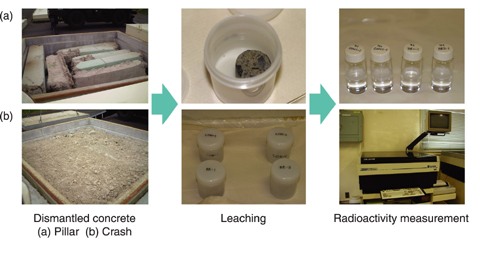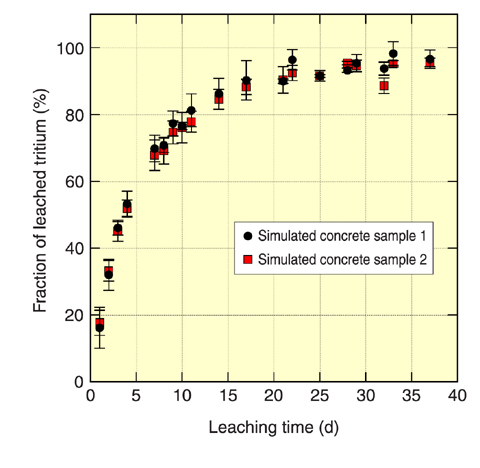
Fig.9-5 Schematic diagram of tritium measurement by a leaching method

Fig.9-6 Leaching behavior of tritium in simulated concrete samples
Decommissioning of nuclear facilities generates a lot of waste such as concrete and metal. The radioactivity of some of the waste is lower than the clearance level, the radioactivity level below which radiation sources can be released from regulatory control. From the viewpoint of reduction of the amount of radioactive waste and efficient use of resources, effective use of the concept of clearance is important.
When the Japan Research Reactor No.3 (JRR-3) was modified, a lot of concrete waste was generated. This concrete waste had a possibility of contamination with tritium generated by the neutron capture reaction of deuterium. However, about four thousand tons of this concrete was estimated to be under the clearance level for radioactivity. Therefore, it was necessary to establish a reliable method to determine whether tritium concentration was lower than the clearance level in this concrete.
Because tritium is a low energy β-ray emitter, its concentration in concrete cannot be determined by an external radiation measurement method. In order to confirm the tritium concentration in a massive amount of concrete, it is necessary to analyze a lot of representative samples. A leaching method, where the sample is immersed in water and the tritium in a sample is leached into the water, was applied to measure the concentration of tritium in the concrete because this method is able to analyze a lot of samples at once (Fig.9-5).
Tritium measurement with the leaching method was generally carried out using crushed concrete or a few g of a massive sample. However, it is known that some tritium is lost during sample powdering or milling. Therefore, ca. 50g of a massive sample was used for analysis of tritium to avoid a loss of tritium during sample preparation. Two kinds of simulated concrete samples doped with tritium were immersed in 100g of water, and the relation between the fraction of leached tritium and leaching time were investigated (Fig.9-6, reference). The result shows that 95% of the tritium in the concrete is leached into the dipped water in 30days. Based on this result, tritium concentration in dismantled concrete samples from "JRR-3" was determined. The tritium concentration determined by the leaching method was in good agreement with that determined by the heating method (sample was heated 2h at 1173K and evaporated tritium was recovered with a cold trap and measured). This indicates that the leaching method is a useful and reliable method to analyze tritium in concrete. Also, the detection limit of the leaching method is over 100times lower than the tritium clearance concentration. Therefore, it is clear that the present leaching method is sufficient to confirm the tritium concentration in dismantled "JRR-3" concrete for clearance.
<Previous: 9-1 | Next: 10 Computational Science and E-Systems Research >